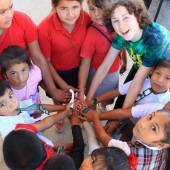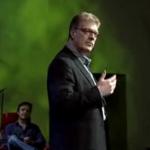
Imagine a world where people hold the highest standards for collaboration, understanding, and mutual respect. Imagine a world where people are engaged and hold a deep commitment to creating genuine, just, and mutually-empowering beneficial relationships. Imagine a world where people have the ability to connect across cultures, appreciate, and deeply listen to different perspectives, understand complex systems – and how we all fit into them – and together co-create solutions to the most daunting of global challenges. Imagine a community of people bringing forward energy and a sense of possibility, and stepping up to create the world we want to live in.
Continue ReadingAs institutions of higher education continue to embrace sustainability as a guiding principle, administrators, campus sustainability leaders, and researchers in the field struggle to present a holistic picture of the changes necessary for complete organizational change. While resources available for decision-makers typically focus on individual case studies on specific concepts, few have worked to address the field as a whole. This paper aims to address sustainability within the frames conceived by Bolman and Deal in their seminal work Reframing Organizations (2008). Specifically, it looks at reframing organizational change within the structural, human resource, political, and symbolic frames, as well as adapting Kotter’s Change Stages to address how sustainability can, and should, transform colleges and universities, while providing the tools necessary for sustainability professionals to enact this innovation.
Continue Reading
The TED (Technology, Entertainment, Design) website brings videos of world-class TED conference talks to everyone’s finger-tips. Something about the website gets us hooked, and the daily inspiration for ourselves, and our students, keeps us coming back for more.
Continue Reading